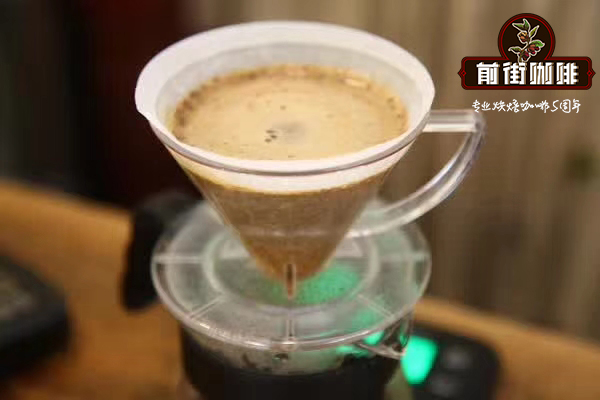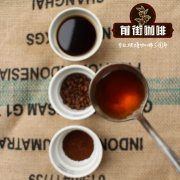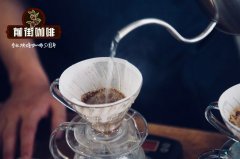A brief introduction to the grading system of coffee beans recommended by Kenyan coffee brands

Professional coffee knowledge exchange more coffee bean information please follow the coffee workshop (Wechat official account cafe_style)
Qianjie-A brief introduction to Kenyan coffee brands and coffee grading system
Kenyan coffee with bright acidity, charming fruit sweetness and flavor, is the favorite of many coffee fans, among which AA grade Kenyan coffee is of excellent quality and is a famous brand in Kenyan coffee. Kenyan AA coffee is graded according to the size of beans. Let's learn about it.
Classification according to the altitude of coffee producing area
The main reason for this classification standard is that the quality of coffee produced at high altitude is generally higher than that at low altitude, because high altitude and low temperature, slow coffee production is conducive to the accumulation of good substances. And the raw beans with high maturity have good expansibility when baking, which is beneficial to baking, and the quality is more stable.
At present, the coffee producers using this classification standard are Central and South American countries such as Guatemala, Mexico, Honduras, El Salvador and so on. Take Guatemala as an example, the most advanced coffee is called SHB (short for Strictly Hard Bean) very hard beans, which is grown at an altitude above 1350m, followed by HB (Hard Bean) hard beans, planted at 1200m--1400m above sea level, SH (Semi Hard Bean) slightly hard beans, EPW (Extra Prime Washed) super quality water washed beans, PW (Prime Washed) high quality water washed beans, EGW (Extra Good Washed) special quality water washed beans, GW (Good Washed) good quality water washed beans, respectively, at an altitude of 1200m. About 1000m, 800m, 600m Murray 800m and less than 600m.
Grade name elevation (m)
1 special grade beans 1.500 ~ 2 high grade beans 1.200 ~ 1.500 ~ 3 medium grade beans 1.000 ~ 1.200 4 grade water washed beans 900000 ~ 1.000 5 grade water washed beans 760000 ~ 900 6 special excellent water washed beans 610 ~ 760 7 superior water washed beans ~ 610
Classification according to screen
Some people say that the size of beans will not affect the flavor of coffee, such as Yemeni coffee, beans have large and small particles, but it is still the top grade of coffee. However, in many producing areas, [the size of coffee beans] is indeed a valuable indicator; in those areas, beans grow big, full and curvy, indicating that coffee is strong and fully mature. the best way to show a beautiful flavor.
In addition, the same maturity of coffee beans, that is, they have the same flavor, the formation of quality coffee. As a result, most new farm beans use this classification method.
This classification method is based on a variety of perforated screen classification, the screen has a variety of specifications, identified by the number, the number is related to the mesh. The size of the mesh is calculated in 1: 64 inches. If the diameter of the mesh is 18: 64 inches, the number of the screen is 18; if the diameter of the mesh is 17: 64 inches, the number of the screen is 17. And so on, there are 19, 16, 15, 14 and other numbered screens.
The process of screening is to put the coffee beans on the Internet and shake them back and forth by machine or manually, and the beans the size of a mesh will fall and be removed, and the beans that have been rejected will be screened through a smaller screen. After such layers of screening, the grade of coffee beans was compiled.
After classification, it is divided into AA, A, B, C and PB. AA is the highest, and A, B and C decrease successively. Those below grade C are usually used as feed or fertilizer. In addition, round beans (Pea-Berry) have a special flavor, and beans are already relatively small, so they have their own grade, that is, PB, which is usually more expensive. In addition, we can also see X, Y1, Y2 and T grades, these coffee beans of different sizes, and a lot of defective beans, is quite a poor product, not worth a try.
This classification is generally used in Kenya, New Guinea, Puerto Rico, Zimbabwe, Tanzania and Island Ganda and other places, only above the AA grade is eligible for selection of coffee. In addition, many Brazilian coffee also use this classification, which only directly means 19, 18, 17. Instead of AA, A, B, C classification.
Grading according to the proportion of screen and defective beans
Defective beans are an important factor that destroys the flavor of the final coffee. Therefore, defective beans should also be removed in the last step of raw bean processing. This has the problem of the number of defective beans, so according to the proportion of defective beans, supplemented by the size of the screen is also a way of classification.
Due to the rise of boutique coffee, coffee producing countries pay more and more attention to the quality of coffee, and the control of defective beans is the most important way, so basically using the proportion of defective beans as a grading method or auxiliary basis is becoming more and more common.
At present, the main representative countries that use defective bean proportion method are Jamaica, Brazil, Ethiopia and so on. Jamaica is based on the production area, altitude, screen, defective bean proportion comprehensive as the rating criteria, such as Jamaica Blue Mountain NO.1 refers to the Blue Mountain producing area, above 1700m above sea level, with 18 gray 17 sieve, the largest defective bean proportion of 2% of the top coffee beans. The proportion of defective beans is used as an important basis. Jamaica strictly controls the proportion of defective beans, and the proportion of defective beans in all grades is no more than 4%.
Brazil is another special country. Brazil is the largest coffee producing country in the world. Because of its large output and many producing areas, the classification work is quite troublesome, and it is not suitable to adopt a single classification standard, so Brazil also uses a variety of classification methods at the same time. Defective bean proportion, sieve and cup evaluation tests are all used in the grading process of Brazilian coffee beans. Needless to say about the first two, the cup evaluation test is one of the characteristics of Brazilian coffee grading.
Knowledge expansion: the so-called cup evaluation test is to evaluate the aroma and taste of raw coffee beans after baking into powder and soaking them in hot water (about 94 degrees).
END
Important Notice :
前街咖啡 FrontStreet Coffee has moved to new addredd:
FrontStreet Coffee Address: 315,Donghua East Road,GuangZhou
Tel:020 38364473
- Prev

Kenya coffee beans taste what analysis Kenya coffee why water washing method
Professional coffee knowledge exchange More coffee bean information Please pay attention to coffee workshop (Weixin Official Accounts cafe_style) Front Street-Kenya coffee flavor, exquisite processing method Share Front Street Today tell you Kenya coffee story! Kenya is geographically very close to Ethiopia and is considered one of the cradles of humanity (some 2.5 million have been unearthed in Kenya).
- Next

What is Kenyan Blue Mountain Coffee? sharing of Kenyan coffee beans
Professional coffee knowledge exchange more coffee bean information please follow the coffee workshop (Wechat official account cafe_style) front street-Kenya, Blue Mountain Coffee introduction to Jamaica Blue Mountain Coffee, which is divided into four grades under Blue Mountain Coffee and Alpine Coffee. From top to bottom in terms of quality, NO.1, NO.2, NO.3 and PB,PB are round beans. According to CIB standards, only
Related
- Beginners will see the "Coffee pull flower" guide!
- What is the difference between ice blog purified milk and ordinary milk coffee?
- Why is the Philippines the largest producer of crops in Liberia?
- For coffee extraction, should the fine powder be retained?
- How does extracted espresso fill pressed powder? How much strength does it take to press the powder?
- How to make jasmine cold extract coffee? Is the jasmine + latte good?
- Will this little toy really make the coffee taste better? How does Lily Drip affect coffee extraction?
- Will the action of slapping the filter cup also affect coffee extraction?
- What's the difference between powder-to-water ratio and powder-to-liquid ratio?
- What is the Ethiopian local species? What does it have to do with Heirloom native species?

